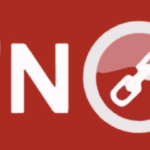The Monty Hall problem is a famous dilemma in probability theory that has confused many and sparked passionate debates. This enigma, popularized by television host Monty Hall on his show “Let’s Make a Deal” in the 1960s, has become a classic case to illustrate fundamental concepts in statistics.
Three Doors and a Hidden Prize Imagine you’re on a television show and face three doors. Behind one of them is a brand-new car, and behind the other two are goats. Initially, you choose a door, but before opening it, the host, who knows what’s behind each door, opens one of the other two to reveal a goat. Now, you are offered the chance to change your choice to the last remaining closed door or stick with your original selection. Should you change?
Misleading Intuition and the Logic of Probability At first glance, it might seem that changing or not changing does not affect the odds of winning the car. After all, there are only two options, right? However, the logic behind statistics reveals the opposite.
When you make your initial decision, the probability of having chosen correctly is 1/3, while the probability of having chosen incorrectly is 2/3. Now, the host removes one of the incorrect options, which does not alter the initial probabilities. This means that if you decide to change, the probability of winning the car becomes 2/3, while if you decide not to change, the probability remains 1/3.
For those finding it challenging to grasp the idea, simulating the game in multiple rounds can be used to illustrate how changing consistently increases the chances of winning. Through computer programs or even manually, it’s possible to conduct simulated experiments demonstrating the superiority of the strategy to change over time.
Analogy with More Doors A helpful analogy to reinforce the concept is to imagine the game with a greater number of doors. Let’s say there are 100 doors instead of 3, and you choose one door. The host, knowing what’s behind each door, opens 98 doors to reveal goats. Now, would you change your initial choice? The answer is yes because the probability of having chosen the correct door initially is still only 1/100, while the probability of the car being behind one of the other two closed doors is 99/100.
The Statistical Logic Behind the Change The Monty Hall Problem vividly illustrates how intuition can lead us astray in statistics. Although it may seem counterintuitive at first, changing your choice after a goat is revealed significantly increases your chances of taking home the coveted prize. This enigma remains a valuable reminder of how probability can challenge our perceptions and how logical reasoning can prevail over intuition in the fascinating world of statistics.











